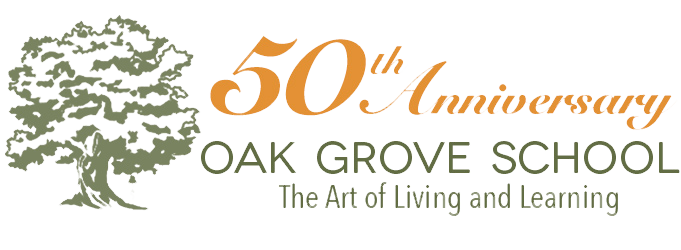Humans are social animals. Does the quantity and quality of our social relationships impact our state of health, future risk of disease, and our life span? Are the effects of relationships via social media the same or different from those of in-person relationships? Please join our presenter Dr. Pathik Wadhwa in a discussion that will touch on the biological and behavioral science behind social relationships, both in-person and virtual.
Former Head of School, Meredy Benson Rice, now the Director of Teaching and Learning spoke about her personal journey as an educator and how students experience education at Oak Grove School as part of the 2015 Do Lecture Series.
If you were not able to join us for this timely Parent Education event, or would like to review, we have provided this recording of parenting expert Dolly Klock’s special presentation on the challenge of finding a balance between screen life and real life. The recording includes attending parents’ Q&A.
To make Unplug Day more festive for our students and staff, we are embracing a theme – School Day in 1984. We invite our students to join our staff and dress as if it were the 1980’s! Parent Council will add to our celebration by creating a “1984 Museum” in the Gazebo, where students will see items like VCRs, Reebok high-tops, cassette tapes, and rubix cubes.
Among the many intriguing articles in this month’s edition, we appreciate the thoughtful feature written by Karen Lindell and published in Ojai Magazine.
At Oak Grove School in Ojai, California, we often share moments of silence with our students, from preschool through 12th grade, as a whole community, in small groups, and individually.
On August 28,1963, on the steps of the Lincoln Memorial Dr. Martin Luther King, Jr. delivered his most famous speech, “I Have a Dream.”
At Oak Grove School in Ojai, California, we often share moments of silence with our students, from preschool through 12th grade, as a whole community, in small groups, and individually.
We are always honored to be part of this important community celebration of Dr. Martin Luther King Jr. who said, “Change does not roll on the wheels of inevitability, but comes through continuous struggle.”
CONTACT OAK GROVE
Oak Grove School of the Krishnamurti Foundation of America
CALL: 805 646 8236
EMAIL: info@oakgroveschool.org
MAIL: 220 West Lomita Avenue
Ojai, California 93023-2244
Latest News
 Annual Fundraising TeaNovember 20, 2025 - 10:49 am
Annual Fundraising TeaNovember 20, 2025 - 10:49 am The Art of Living & LearningNovember 19, 2025 - 5:08 pm
The Art of Living & LearningNovember 19, 2025 - 5:08 pm Gratitude is HumblingNovember 17, 2025 - 2:01 pm
Gratitude is HumblingNovember 17, 2025 - 2:01 pm High School Info Night 12-2-25November 13, 2025 - 11:18 am
High School Info Night 12-2-25November 13, 2025 - 11:18 am Reflections from the KFI Teachers’ ConferenceNovember 5, 2025 - 4:07 pm
Reflections from the KFI Teachers’ ConferenceNovember 5, 2025 - 4:07 pm
Non-Discrimination Policy
Oak Grove School does not discriminate on the basis of any individual or group identity characteristics, such as but not limited to race, color, gender identity or expression, sexual orientation, age, national or ethnic origin, differing mental or physical abilities, or family structure in the administration of its educational or admissions policies, employment practices, scholarship, and other school-administered programs. View the unabridged policy.


